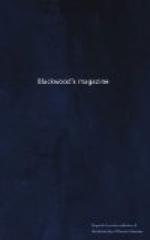complete, the “Pastorals, or Daphnis and Chloe”
of Longus—a work in itself of no particular
merits or demerits as a literary composition, but
noted for its unparalleled depravity, and further
remarkable as the first of the class of pastoral romances,
which were almost as rife in Europe during the middle
ages as novels of fashionable life are, for the sins
of this generation, at the present day. There
only remain to be enumerated the three precious farragos
entitled “The Ephesiacs, or Habrocomas and Anthia”—“the
Babylonics”—and “the Cypriacs”—said
to be from the pen of three different Xenophons, of
whose history nothing, not even the age in which any
of them lived, can be satisfactorily made out—though
the uniformity of stupid extravagance, not less than
the similarity of name, would lead
a priori
to the conclusion that one luckless wight must have
been the author of all three. From this list
of the Byzantine romances, (in which we are not sure
that one or two may not after all have been omitted,)
it will be seen that Heliodorus had a tolerably numerous
progeny, even in his own language, to answer for;
though we fear we must concur in the sweeping censure
of a Quarterly Reviewer, (vol. x. p. 301,) who condemns
then
en masse, with the single exception of
the “Ethiopics” of the last-named author,
as “a few tiresome stories, absolutely void of
taste, invention, or interest; without influence even
upon the declining literature of their own age, and
in all probability quite unknown to the real forerunners
of Richardson, Fielding, and Rousseau.”
[Footnote 52: The principal adventures of Clitophon
and Leucippe consist in being twice taken by pirates
on the banks of the Nile, as Theagenes and Chariclea
are in the Ethiopics.]
A work thus excepted, by common consent, from the
general reprobation is which all its compeers are
involved, must deserve some notice from its negative,
if not from its positive merits; and the particulars
which have been preserved of its literary history
are also somewhat curious. Even in these days,
when almost every other individual is a novelist,
either in esse or in embryo, the announcement
of a love-story from the pen of a bishop would create
what is called “a considerable sensation”—though
perhaps it would hardly draw down on the author such
condign and summary punishment as was inflicted by
the straitlaced Kirk of Scotland, less than a century
ago, on one of her ministers, for the high crime and
misdemeanour of having indited “a stage play,
called the Tragedy of Douglas."[53] Yet not
only the “Ethiopics,” but the best known
of its successors, the “Clitophon and Leucippe”
of Achilles Tatius, are both universally asserted
to have been juvenile productions of ecclesiastics
who afterwards attained the episcopal dignity:
and the former, if we may credit the Ecclesiastical
History of Nicephorus, fared not much better at the
hands of the Provincial Synod of Thessaly than did




